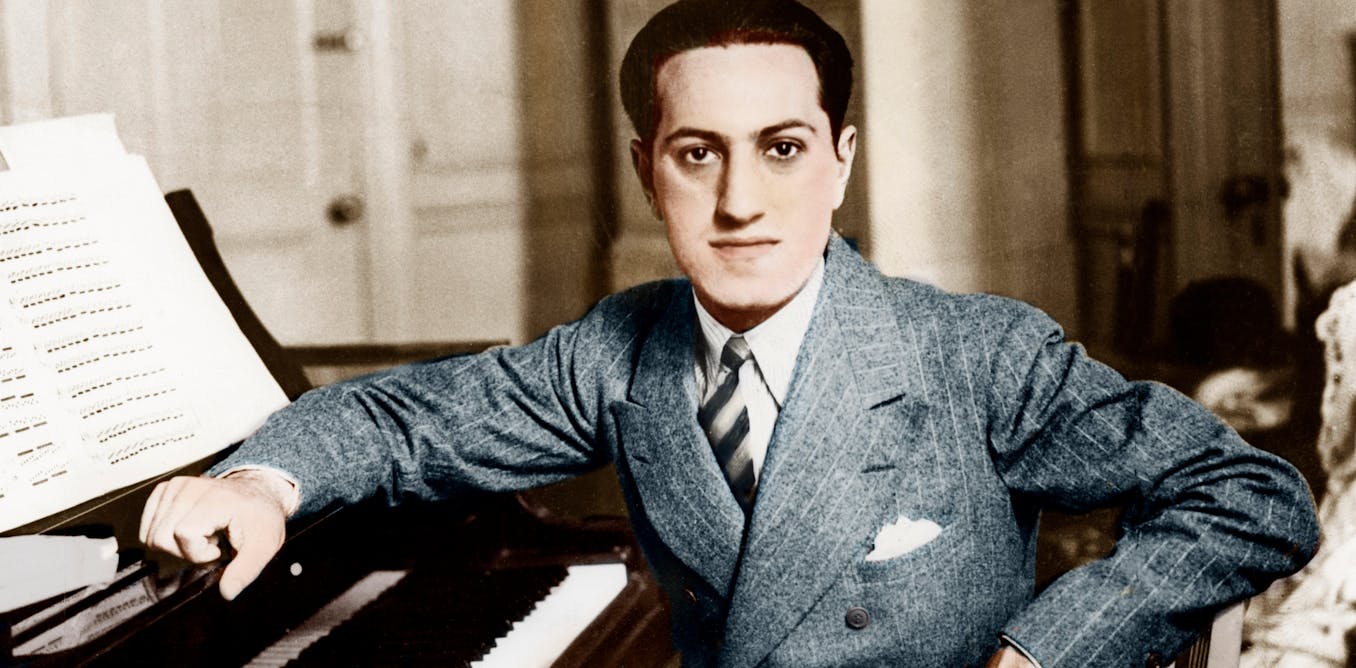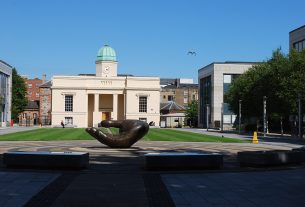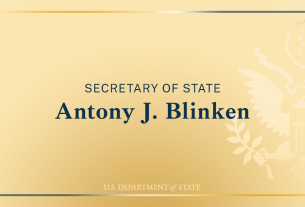George Gershwin’s 1924 composition Rhapsody in Blue is so timeless that it seems scarcely possible that he composed it 100 years ago. Its centenary offers us a special opportunity to celebrate this iconic work that defies time and place.
As the director of University of Plymouth’s Musica Viva concert series, I organised a special celebration concert on January 27, featuring the London Gershwin Players conducted by the wonderful Mark Forkgen. It was an all-Gershwin programme that also included the overture to the musical Girl Crazy, A Porgy and Bess Fantasy and An American in Paris.
But rather than performing the most frequently heard 1942 symphonic orchestration of Rhapsody in Blue, we performed the original Paul Whiteman Band version – the incisive, dynamic and wonderfully playful and jazzier orchestration of Gershwin’s 1924 original.
Setting the stage
Gershwin (1898-1937) first composed hit songs for Broadway musical theatre. Uniquely, he blended jazz and classical elements in varying degrees in his longer compositions. He had a highly original melodic gift, and his many songs and other compositions brought joy and optimism to his audiences.
Gershwin’s musical education started with exposure to classical and popular compositions he heard at school in New York. His parents, Russian Jewish immigrants, bought a second-hand upright piano when he was 11. In his early teens, Gershwin broadened his musical education by studying composition with leading members of the American musical community, including composers and pianists Henry Cowell and Wallingford Riegger.
After leaving school at 15, Gershwin earned an income by playing in New York nightclubs. He also demonstrated sheet music by playing it live for the Remick music publishing company; this introduced him to a wide range of popular songs and jazz.
Gershwin’s first published song (1916) was When You Want ’Em You Can’t Get ’Em (When You’ve Got ’Em You Don’t Want ’Em). Three years later, entertainer Al Jolson performed the Gershwin song Swanee in the musical Sinbad, which became an enormous success.
In the early 1920s, Gershwin wrote songs for various Broadway shows and revues, including (I’ll Build a) Stairway to Paradise and Somebody Loves Me. His older brother Ira was the lyricist for almost all these songs. Ira’s witty lyrics, often punctuated with wordplay and puns, received almost as much acclaim as George’s compositions and were fundamental to their success.
Melding classical music with jazz
Throughout his career, Gershwin also focused on orchestral compositions, often melding musical styles in ways that brought special freshness and enduring grace to his works. His larger works involving orchestra include the opera Porgy and Bess, Rhapsody in Blue, a Piano Concerto, Cuban Overture and Second Rhapsody.
Gershwin was gregarious, with a genuinely magnetic personality and was always eager to learn from others. He loved his work and approached every assignment with enthusiasm, never suffering from composer’s block.
He was interested in many styles of music and composition and requested lessons from Ravel and even Schoenberg, both of whom declined to teach him as they did not want to interfere or influence his unique personal voice and style. (However, Gershwin and Schoenberg did engage in weekly games of tennis.)
Paul Whiteman, a popular bandleader who had conducted the pit orchestra for the popular musical Scandals (1922), was impressed by Gershwin’s songs in that work. He and Gershwin shared the notion of integrating elements of jazz and classical styles, and in late 1923, Whiteman asked Gershwin to compose a work for a concert he was planning called An Experiment in Modern Music, which was to take place at New York’s Aeolian Concert Hall, a classical venue.
gershwin.com
Apparently, Gershwin forgot about the request until early January 1924 when his brother Ira saw a newspaper article announcing George’s new work in the upcoming concert. Gershwin got to work shortly after, composing Rhapsody in Blue in just three weeks, an astonishing feat given its musical complexity. This initial version was orchestrated by Ferde Grofé specifically for Paul Whiteman’s band. It is this original version that we performed recently in the Musica Viva series.
Gershwin incorporated into the Rhapsody hallmarks of jazz including expressive blue notes (flatted, or lowered, notes) long passages of syncopated rhythms, and onomatopoeic musical effects. He subsequently reflected:
There had been so much chatter about the limitations of jazz, not to speak of the manifest misunderstandings of its function. Jazz, they said, had to be in strict time. It had to cling to dance rhythms. I resolved, if possible, to kill that misconception with one sturdy blow … No set plan was in my mind, no structure to which my music would conform. The Rhapsody, you see, began as a purpose, not a plan.
The premiere performance, with Gershwin playing the solo piano part, was attended by musical luminaries including Igor Stravinsky, Fritz Kreisler and Leopold Stokowski. Rhapsody in Blue was an immediate public success and brought Gershwin worldwide acclaim.
Owing to its popularity, Grofé subsequently made an arrangement for a large orchestra in 1942 which has become the more frequently performed version. I have played this later version many times with various orchestras, but have long wanted to perform the original 1924 version for the 23-member Whiteman band. I believe it is tighter, edgier, more incisive and yet more intimate, embodying Gershwin’s idea of combining classical and jazz musical elements.
So beloved was Gershwin throughout not only America but also across Europe, that when he died at 38 of a brain tumour, the novelist John O’Hara summed up popular sentiment: “George Gershwin died on July 11, 1937, but I don’t have to believe it if I don’t want to.”



